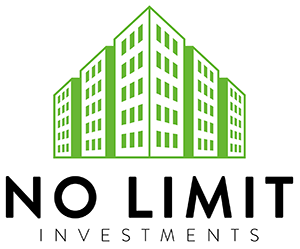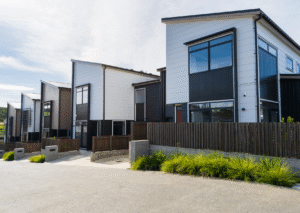What Are Commercial Real Estate Bridge Loans?
Commercial real estate bridge loans are short-term financing tools designed for investors acquiring non-owner occupied properties. They provide immediate capital for time-sensitive opportunities, such as distressed property purchases, new developments, or properties in need of renovation. Unlike traditional loans, which may take months to close, bridge loans often fund within weeks, lasting between six months and three years (U.S. Small Business Administration).
This speed makes bridge loans especially useful for investors who need to move quickly in competitive markets. They are often the first step in a larger financing plan, bridging the gap until permanent funding—such as a buy & hold mortgage or DSCR loan—can be secured.
How Do Bridge Loans Support Portfolio Growth?
Scaling a real estate portfolio depends on seizing opportunities as they arise. Bridge loans provide the flexibility and immediate access to capital required to expand holdings without delay. An investor who discovers a commercial property at below-market value may not qualify for a conventional mortgage right away if the property needs improvements. A bridge loan enables the purchase and necessary renovations, allowing time to refinance later into long-term financing.
For investors pursuing growth, bridge loans are catalysts that:
- Provide liquidity for acquisitions.
- Stabilize or rehab properties before refinancing.
- Free capital for repeat investments, supporting portfolio expansion.
Why Do Investors Use Bridge Loans for Commercial Properties?
Bridge loans solve challenges that traditional financing cannot. For instance, properties in poor condition may not meet the criteria for permanent loans. Bridge loans cover acquisition and renovation costs, positioning the property for long-term financing once stabilized.
They are also crucial in competitive environments, such as auctions or quick-turn deals, where acting fast determines success. Because underwriting for bridge loans often considers property value and potential rather than only borrower credit, they are accessible to investors building their portfolios.
In short, bridge loans offer strategic flexibility when timing, property condition, or market conditions present obstacles.
What Are the Key Benefits of Using Bridge Loans?
Commercial real estate bridge loans offer several advantages, including:
- Speed: Fast approvals and funding compared to traditional mortgages.
- Flexibility: Designed for non-owner occupied properties, including multi-family, mixed-use, and commercial spaces.
- Value leverage: Loans may be based on after-repair value (ARV).
- Transition opportunities: They create a path into long-term solutions such as buy & hold mortgages or DSCR loans.
- Competitive edge: Investors gain the ability to act quickly on opportunities that others cannot secure.
When aligned with a larger financing strategy, bridge loans serve as stepping stones toward sustainable wealth building.
How Do Bridge Loans Compare to Other Real Estate Financing Solutions?
Bridge loans differ from conventional loans, which are often more rigid and require stabilized properties. Bridge financing focuses on speed and flexibility, while long-term loans provide stability and predictable payments.
Investors often combine bridge loans with other financing solutions to maximize outcomes:
- Buy & hold mortgages for long-term rental stability.
- BRRRR financing for cycling capital into multiple projects.
- Cash-out refinance to extract equity from improved properties.
- DSCR loans for income-based qualification.
- New construction loans for development projects.
- Fix & flip loans for short-term renovation strategies.
By offering a one-stop shop of financing tools, firms like No Limit Investments make it possible to design customized pathways from acquisition through stabilization and long-term wealth building.
What Risks Should Investors Be Aware of With Bridge Loans?
Bridge loans are not without risk. Investors should prepare for:
- Higher interest rates compared to conventional loans.
- Short terms requiring clear exit strategies.
- Market volatility that could complicate refinancing or sales.
- Closing costs and fees that can reduce profit margins.
The best way to mitigate these risks is to partner with lenders offering growth and development advisory services, helping investors plan exits like refinancing into cash-out or DSCR loans. With expert support, risks become manageable within a broader investment strategy.
How Can Bridge Loans Be Integrated Into Investment Strategies?
Bridge loans should not be viewed in isolation but as tools within a portfolio strategy. They pair well with methods like:
- BRRRR strategy: Using a bridge loan for acquisition and rehab, then refinancing with a long-term loan.
- Fix & flip: Securing funds for quick renovations before selling or refinancing.
- New construction: Covering initial development stages before securing permanent financing.
- Cash-out refinance: Using bridge loans to stabilize a property, then refinancing to unlock equity for new projects.
By combining these strategies with professional credit and debt advisory services, investors can balance risk and growth while scaling efficiently.
What Role Do Bridge Loans Play in Today’s Real Estate Market?
In today’s dynamic market, where interest rates fluctuate and traditional financing can be slow, bridge loans provide speed and adaptability. They are particularly valuable for investors competing in tight markets or dealing with properties that require improvements.
As lending standards tighten, many investors rely on bridge loans as essential tools to move forward, keeping their portfolios competitive and profitable. For non-owner occupied investments, bridge loans have become indispensable in navigating both opportunities and uncertainties.
Why Should Investors Consider Professional Guidance for Bridge Loans?
Successfully using bridge loans requires strategy. Professional lenders help align short-term financing with long-term goals, ensuring investors have exit paths such as DSCR loans or buy & hold mortgages.
No Limit Investments positions itself as a one-stop shop for real estate financing. Their offerings, fix & flip loans, buy & hold mortgages, BRRRR financing, cash-out refinance, DSCR loans, new construction loans, and tailored real estate financing solutions, equip investors with everything needed to scale portfolios effectively. Beyond funding, their growth and development services and credit advisory provide guidance for building sustainable wealth strategies.
How Can You Take the Next Step Toward Scaling Your Portfolio?

Are you ready to leverage commercial real estate bridge loans as part of a larger portfolio strategy? Explore the comprehensive services of No Limit Investments. With their one-stop shop approach, including fix & flip loans, buy & hold mortgages, BRRRR financing, cash-out refinance, DSCR loans, new construction loans, and professional advisory support, you can confidently expand your portfolio, manage risk, and build long-term wealth. Call now!
Final Thoughts
Commercial real estate bridge loans empower investors to act quickly, acquire non-owner occupied properties, and strategically expand their portfolios. When paired with exit strategies like refinancing or transitioning into permanent loan products, they become vital tools for scaling in today’s competitive market.
By partnering with trusted financing professionals like No Limit Investments, investors gain more than just capital, they gain a one-stop shop of tailored solutions and advisory services that ensure long-term success.
Works Cited
U.S. Small Business Administration. Types of SBA Loans. U.S. Small Business Administration, www.sba.gov/funding-programs/loans.
Federal Reserve Board. Commercial Real Estate Lending Standards. Board of Governors of the Federal Reserve System, www.federalreserve.gov.
Urban Institute. The Role of Real Estate Financing in Economic Growth. Urban Institute, 2023.
National Association of Realtors. Commercial Real Estate Market Trends. NAR, 2024.
Frequently Asked Questions
What are commercial real estate bridge loans?
Commercial real estate bridge loans are short-term financing tools that provide investors with quick access to capital for non-owner occupied properties while they prepare for long-term financing.
How long do commercial real estate bridge loans last?
Most bridge loans last between six months and three years, giving investors time to stabilize properties, complete renovations, or transition into permanent financing.
Why are bridge loans important for scaling investment portfolios?
Bridge loans enable investors to act quickly on time-sensitive opportunities, such as auctions, distressed sales, or properties requiring renovations, without waiting for traditional loan approvals.
What risks are associated with commercial real estate bridge loans?
The main risks include higher interest rates, shorter repayment terms, market volatility, and closing costs. Having a clear exit strategy helps minimize these risks.
How can No Limit Investments help with bridge loans?
No Limit Investments offers a one-stop shop of financing solutions, including fix & flip loans, buy & hold mortgages, BRRRR financing, DSCR loans, cash-out refinance, and new construction loans, along with advisory services to support long-term success.







